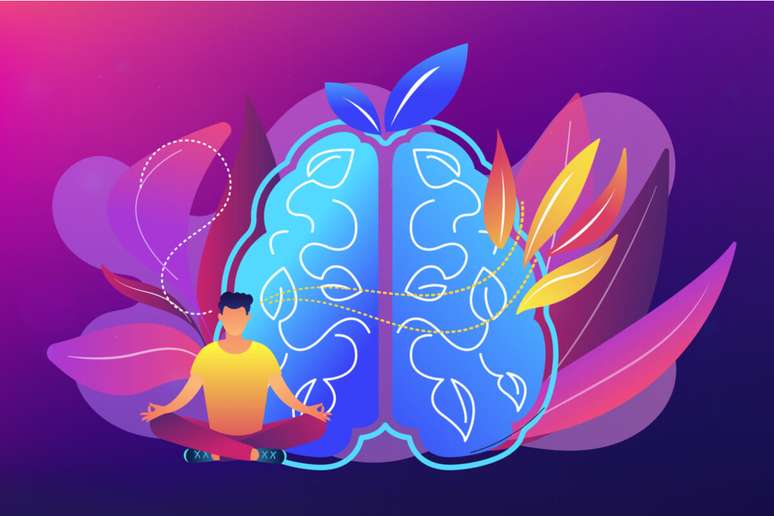The psychiatrist explains what the differences are between fear and phobia and how to treat them
It may be strange to think so, but fear is not a bad thing, much less harmful, as long as it is not paralyzing. It is a natural reaction of the body when faced with a new, unknown or challenging situation. Its main function is to protect us, acting as a warning to prepare us for a risk situation.
According to psychologist and psychiatrist Dr. Catulo Cesar Barros, the relationships between the amygdala (structure located in the center of the brain) and the hypothalamus, also in the brain, are closely linked to sensations of fear and anger.
“The amygdala is responsible for sensing, generating and maintaining emotions related to fear, as well as recognizing facial expressions of fear and coordinating appropriate responses to threat and danger,” he explains.
Fear is part of the story
Fear has existed since our origins and, perhaps, even much earlier. “Both anger and fear are considered states of body preparation face unknown situations. They probably appeared hundreds of millions of years ago, with the first reptiles escaping predators and spreading across the globe. And they continue to exist in many animals, including mammals, including humans,” says the psychiatrist.
Difference between healthy and pathological fear
Fear is beneficial when it helps the individual adapt to environmental circumstances. For example, when there is a real and immediate danger to face, explains Dr. Catulo Cesar Barros. “He becomes pathological when referring to an environmental stimulus that does not constitute a real threat, even though it triggers the same emotions as a real danger. In this case it’s called a phobia,” he explains.
Phobias are determined by persistent and irrational fears regarding a specific object, activity or situation, but which, in reality, do not present any danger. This exaggerated fear translates into an uncontrollable need to avoid this stimulus. If this is not possible, the confrontation is preceded by anticipatory anxiety and carried out with great suffering and compromised performance.

Types of phobias
There are different types of phobias, which can be divided based on the cause of the disorder. According to Dr. Catulo Cesar Barros the main phobias can be divided into: agoraphobia, panic syndrome and social phobia. Look down:
Agoraphobia
It designates the fear of different situations: going out or being unaccompanied, entering shops, markets, open or closed public places, public transport, cars, walking on highways and traffic jams. «In the most serious cases, the patient cannot leave the house, or can only do so accompanied, with great compromise to personal and family life. A more thorough evaluation shows that he is not afraid of situations, but he is afraid of feeling bodily sensations inside anxiety or panic attacks in them. This fear of fear is the fundamental characteristic of agoraphobia,” explains the expert.
Panic syndrome
It is the name used for the set of manifestations included in the concepts of panic disorder and agoraphobia.
Social phobia
It is the excessive fear of situations in which the person may be observed or evaluated by others, for fear of behaving in an embarrassing or humiliating way. “If it is impossible to avoid the situation, it presents pathological anxiety, which can lead to a panic attack. The most common situations are: attending parties or meetings, being introduced to someone, starting or maintaining conversations, talking to people in of authority, receiving visits at home, being observed during some activity (eating, drinking, speaking, voting, using the telephone), being the object of jokes or teasing and using public toilets”, he describes.
Symptoms of phobias
The symptoms of these phobias are similar to a so-called panic attack. That is, symptoms such as palpitations, tachycardia, sweating, tremors and dry mouth must be present. They may also be accompanied by other symptoms, such as:
- Dyspnea (feeling of shortness of breath);
- Suffocation;
- Precordialgia;
- Nausea;
- Abdominal discomfort;
- Dizziness;
- Derealization;
- Fear of dying or losing control;
- Redness or changes in sensitivity.
Treatment for the problem
The most effective and quickest treatment is with the help of a psychiatrist, a specialist in emotional disorders. “The psychiatrist will use antidepressants in the treatment, since these are drugs that will stabilize the neurotransmitters that control the chemistry of emotions, in the responsible brain areas,” explains Dr. Catulo Cesar Barros.
Associated with these drugs, a type of cognitive behavioral therapy, called exposure therapy. “Combined with relaxation techniques, this therapy is very effective and provides the individual with a feeling of control over the phobia,” adds the psychologist. It is important to underline that all cases of phobias must and can be treated whenever they constitute an obstacle to a better quality of life for those who suffer from them.
Source: Terra
Ben Stock is a lifestyle journalist and author at Gossipify. He writes about topics such as health, wellness, travel, food and home decor. He provides practical advice and inspiration to improve well-being, keeps readers up to date with latest lifestyle news and trends, known for his engaging writing style, in-depth analysis and unique perspectives.








